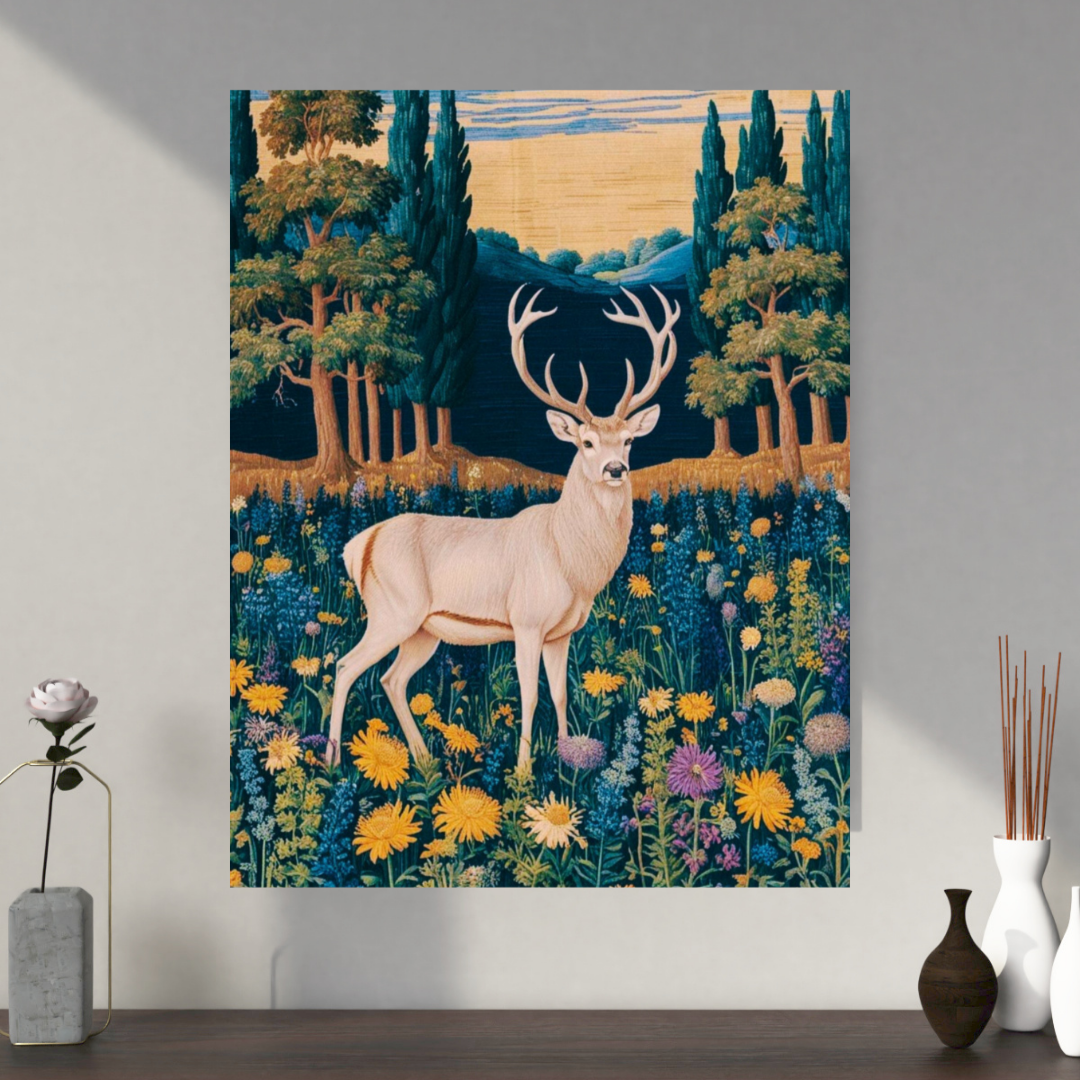
From Loom to Wall: The Art of Medieval Tapestries
Medieval tapestries are masterpieces that capture the essence, history, and art of an era. Their creation was a labor of love that wedded technical skill, artistic brilliance, and a deep sense of narrative. These woven masterpieces not only adorned the walls of castles and churches but also served as records of historical fact, legend, and moral guidance—basically, the medieval version of a home décor-meets-history channel.
The Journey from Raw Materials to Masterpiece
The process began with the careful choice of materials. Wool was the go-to fiber, being both durable and dye-friendly—think of it as the medieval equivalent of your favorite pair of jeans. For a touch of luxury, they threw in some silk, adding that irresistible shimmer, and if the patron had particularly deep pockets (or an ego to match), they'd sprinkle in some metal-wrapped threads—basically, silk threads wearing their fanciest gold or silver bling.
Artisans prepared the threads by dyeing them with natural pigments sourced from plants, minerals, and even insects (yes, bugs—because medieval folks were nothing if not resourceful). Woad gave them blues, madder root provided rich reds, and cochineal offered a deep crimson that screamed, “I’m fancy!” Achieving vibrant, lasting colors required meticulous attention to temperature, mordants, and not spilling dye all over the floor.
Designing the Narrative: The Role of Cartoons
Before the weaving fun began, artists whipped up full-scale designs known as cartoons—and no, not the Saturday morning kind. These detailed drawings served as guides for the weavers. Drawn on paper (not directly on the warp threads because, let’s face it, mistakes happen), they allowed for flexibility and reuse, especially in the tapestry powerhouses of Flanders and France.
Once the cartoon was ready, it was placed behind or beneath the warp threads on the loom, ensuring the weavers could follow the design like a medieval GPS—“Turn left at the castle tower, continue straight to the dragon.”
The Art of Weaving: Techniques and Tools
Weaving took place on large, sturdy looms, either horizontal (low-warp) or vertical (high-warp), depending on regional preferences and how much back pain the weavers were willing to endure. The process involved interlacing the colorful weft threads over and under the stationary warp threads, creating the intricate patterns that made nobles say, “Behold, my wall is fancier than yours!”
Contrary to popular belief, medieval European tapestries rarely used knotted techniques (leave that to your grandmother’s macramé projects). Instead, weavers used techniques like:
- Tabby weave (plain weave): The bread-and-butter of tapestry techniques.
- Soumak: Adds a raised texture—perfect for outlines and for showing off.
Creating a large tapestry could take months or even years, depending on the size and the number of weavers. The famous "Apocalypse Tapestry" (14th century) took several years and a small army of weavers, all probably wondering, “Are we done yet?”
More Than Decoration: Tapestries as Symbols of Power
Tapestries weren’t just medieval wallpaper; they had jobs to do:
- Insulation: Thick wool tapestries kept castles from feeling like giant stone refrigerators.
- Portability: Unlike frescoes, tapestries could be rolled up and moved—perfect for nobles who liked to redecorate on a whim.
- Status Symbols: Nothing said “I’m important” like a giant wall-hanging depicting your family slaying dragons, winning battles, or just looking regal.
A Legacy Woven into History
Today, medieval tapestries continue to captivate us with their rich textures, vivid colors, and epic stories. They offer a window into the medieval mind—a world where art wasn’t just pretty, it was power, prestige, and occasionally, a really fancy draft stopper.
Each tapestry stands as a testament to the enduring magic of woven art—where history, culture, and creativity intertwine seamlessly (literally).
